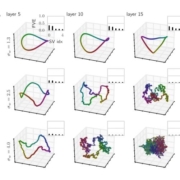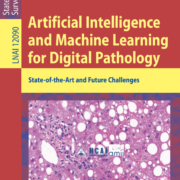On-Device Machine Intelligence
One very interesting approach of federated machine learning is presented by Sujith Ravi from Google: Machine learning models (e.g. CNN) are sucessfully used for the design of intelligent systems capable of visual recognition, speech and language understanding. Most of these are running on a cloud – which is often inpredictable where it is physically running. A huge problem so far is that typical machine learning models are awkward to use on mobile devices due to both computational and memory constraints. While these devices could make use of models running on high-performance data centers with CPUs or GPUs, this is not feasible for many applications and scenarios where inference needs to be performed directly “on” device. This requires re-thinking existing machine learning algorithms and coming up with new models that are directly optimized for on-device machine intelligence rather than doing post-hoc model compression. Sujith Ravi is introducing a novel “projection-based” machine learning system for training compact neural networks. The approach uses a joint optimization framework to simultaneously train a “full” deep network and a lightweight “projection” network. Unlike the full deep network, the projection network uses random projection operations that are efficient to compute and operates in bit space yielding a low memory footprint. The system is trained end-to-end using backpropagation. Ravi shows that the approach is flexible and easily extensible to other machine learning paradigms, for example, they can learn graph-based projection models using label propagation. The trained “projection” models are then directly used for inference, please watch the origial video on:










